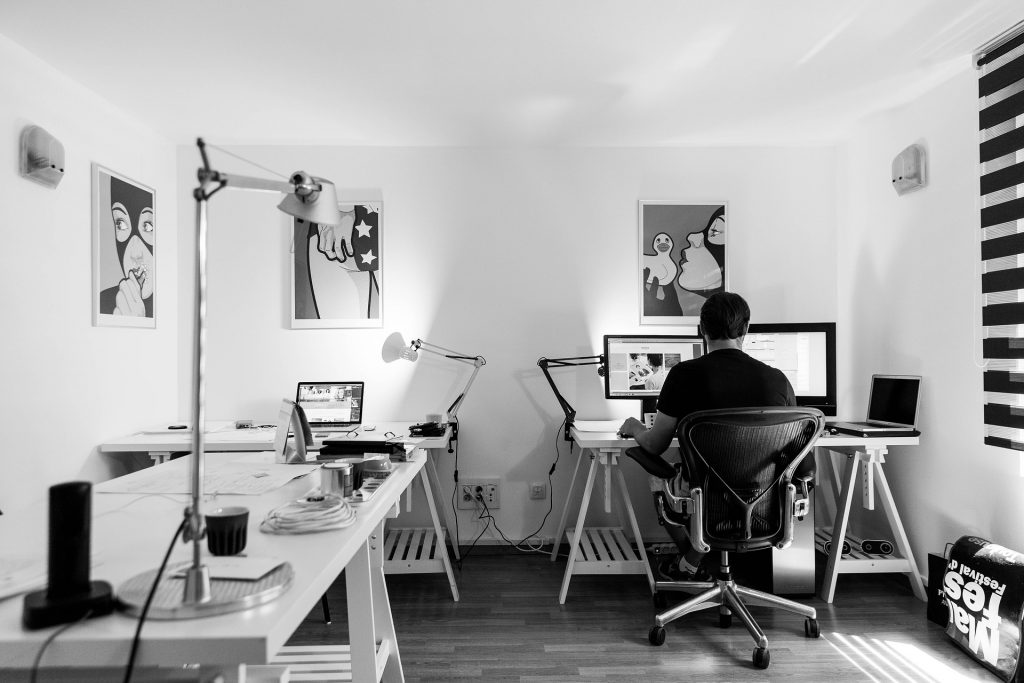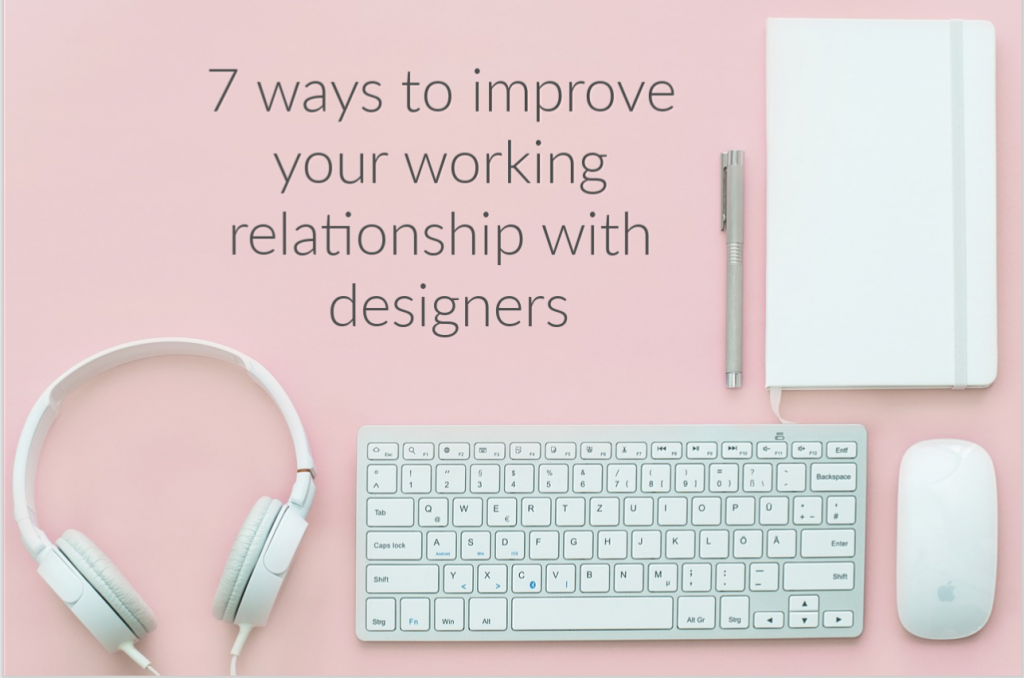
7 ways to improve your working relationship with designers
Make it pop.
Make it different.
Can it be prettier?
It’s not really what I was going for.
Can it look more “techy?”
I don’t like that shade of green.
Words every designer cringes at when hearing them, and words no marketing professional should ever say.
Marketers and designers work closely together on a variety of projects, from simple social media graphics to multi-page ebooks or guides and everything in-between, but sometimes we’re not speaking the same language or communicating clearly enough even when we have the same goal in mind.
Before you hand off your next project to your designers, review these easy ways to make sure the final layout and creative matches your vision and brand standards, without spending hours in editing mode.
7 ways marketers and designers can work better together

1. Create a plan together
Unless it’s a standard project or simply updating text on an already created layout, schedule a meeting so you can create a plan as a team. Talking it out can help you identify areas you need to provide more direction in, set expectations and deadlines, and get input from the designer on elements that might need tweaking or ideas they have for the layout or presentation.
During your meeting, make sure you are both clear on the:
- Project scope
- Branding
- Messaging
- Target audience
- Feeling you’re trying to convey
- Size guidelines
- Specific images or colors that need to be included
- CTAs and their placement
- Intended use
Covering these items can answer many of your designer’s questions and make sure you’ve covered all your bases, like sharing that you need this infographic in both JPEG and PNG and in a web-sized version and print version.
I like creating templates with my designers for standardized projects, like ebooks, cheatsheets, and infographics, so each time they get my final document with copy and design instructions, they know how to read it and run with it.
2. Ask questions and invite questions about the project
Leave time for questions from both sides and make sure you both have you what you need to move forward to meet the next due date. I’ve found that both parties are good at underestimating how long certain tasks or designs will take but marketers more so.
Let the designer lead the discussion on turnaround times, but build in buffers for feedback rounds and time so they, and you, can meet other project deadlines as appropriate – you’re probably not the only one they’re doing work for!
You should also let the designer know you’re happy to answer any questions they have during the design phase, as well as take suggestions for design changes based on their experience and expertise.
3. Do copy proofs first
Pretty much every designer I’ve worked with talk about copy edits being the bane of their existence, and that’s completely understandable. How often do marketers complain when we’re told to create a campaign but only have 50% of the information we need?
Let’s make everyone’s lives easier by always doing copy checks before handing it to our designer so the edits won’t be as tedious and will be more focused on the design and layout instead of things like, “Delete this sentence. Move this paragraph up.”
They’ll hate you less and you won’t have to send such cringey emails with a bunch of smileys and exclamation points to make it seem like your ninth email with copy edits is a good thing.
4. Get a one- or two-page mockup
Depending on the size of your project, I always like to get a mockup to get a sense of how the design will look before having the designer lay the whole thing out. If it’s an ebook, I might ask for a chapter title page and sample page with call-out boxes and graphics (using real copy that I’ve already proofed), so we’re both happy with the direction it’s going in.
It’s the marketer’s job to provide a quick turnaround on the mockup to not delay the rest of the process.
Along the same lines, I like sending over examples of similar projects that our designers can base their look off of but still use our branding guidelines. This helps bring your vision to life without completely stifling their creativity.
5. Document all communication and changes
Take good notes during your initial meeting and any meetings after that and send a recap to everyone involved. This keeps everyone on the same page and accountable for their part of the project.
If you have any changes during the project, document that too with sticky notes on PDFs or in Word with a note and the date the change was made. Again, this keeps everyone on the same page with where the project is heading or if the scope needs to change.
6. Provide constructive feedback
Go back and read the opening of this blog, does any of that sound constructive to you? As marketers, we need to be skilled in providing clear and constructive feedback to our designers so they can do what they do best.
Instead of: Make it pop.
Try: I’m afraid the text might not be contrasting enough. What are some other bold text options we can look at or can we add drop shadows to certain sentences or can we test a different color?
Instead of: Make it different.
Try: I like the layout but I’m worried it’s too similar to our competitors’ and what’s already on the market. How can we play with the text and image placement to change it up?
Instead of:Can it be prettier?
Try: I think we need to look at new image options or rethink the color scheme as I’m not sure if it’ll resonate with my target audience.
Instead of: It’s not really what I was going for.
Try: It’s a little busy right now. What can we cut to add more white space to the layout?
Instead of: Can it look more “techy?”
Try: The graphics don’t say technology as strongly as I’d like. Do you have other image options or can we use some graphics like computer monitors, phones, or keyboards? Also, here are some tech brands our audience follows and they seem to use a similar font, can we use that as well?
Instead of: I don’t like that shade of green.
Try: I think the green is too light. Is there another shade we can use that still conveys savings and money?
Pinpoint what it really is that you don’t like or isn’t working for you and give them room to make the fix. Always frame it in terms of the actual design and not them personally as a designer.
We owe it to our designers to be as specific as possible and give them a reason for making a design change, as well as being open to the reason they made that design decision or ideas they have for improvement.
7. Respect each other
Finally, you both have to have respect for what the other does. You can’t come into the meeting expecting they’re there to serve your every design need, but they also need to come into the meeting respecting the choices you’ve made for the piece.
You can’t have any kind of quality relationship without respect so be sure to communicate that clearly – especially when you’re having trouble providing feedback! Respect goes both ways and it can go a long way to making your next marketing campaign a huge success from both the copy and design side.
If you ever want to see bad examples of how to talk to designers and need a laugh, head on over to clientsfromhell.net. Just try not to be one of the clients that ends up there.





